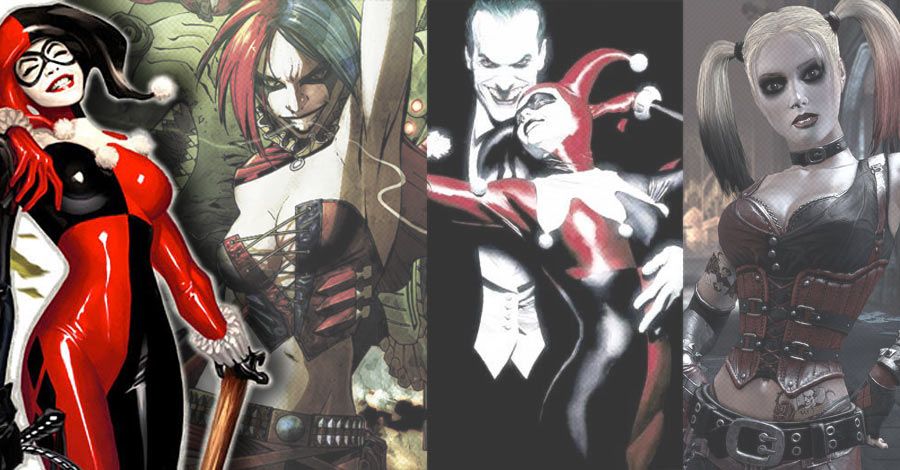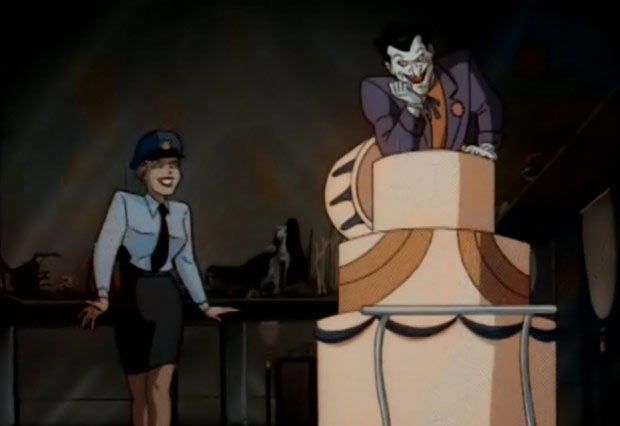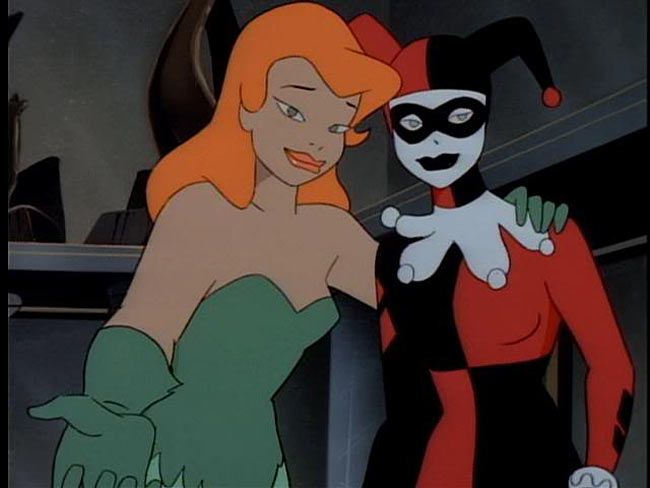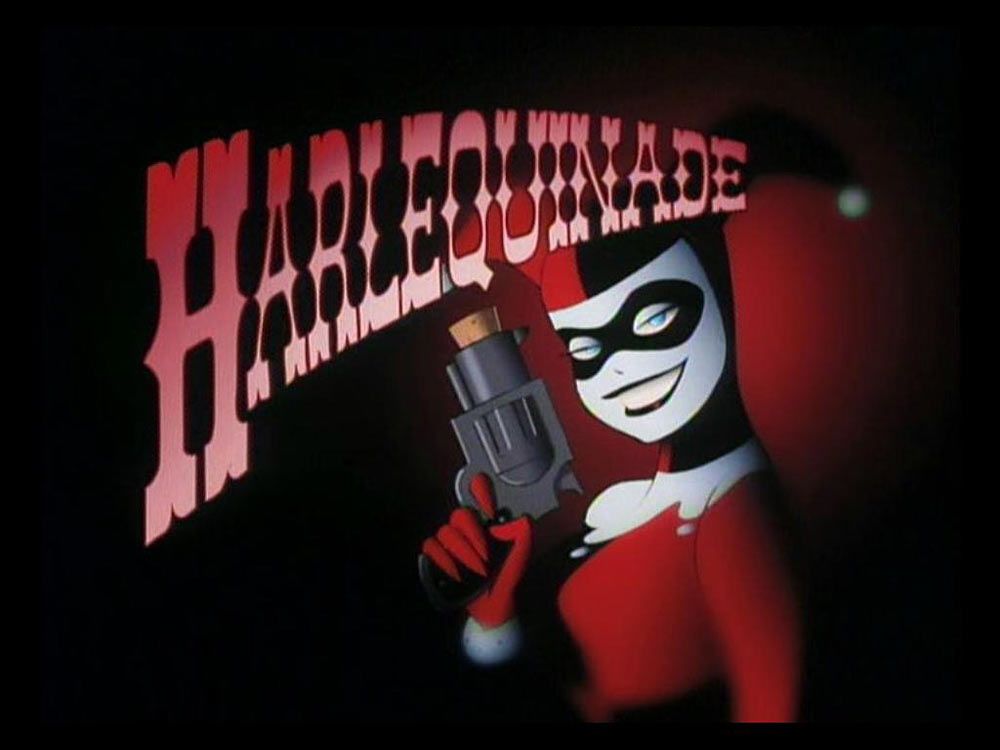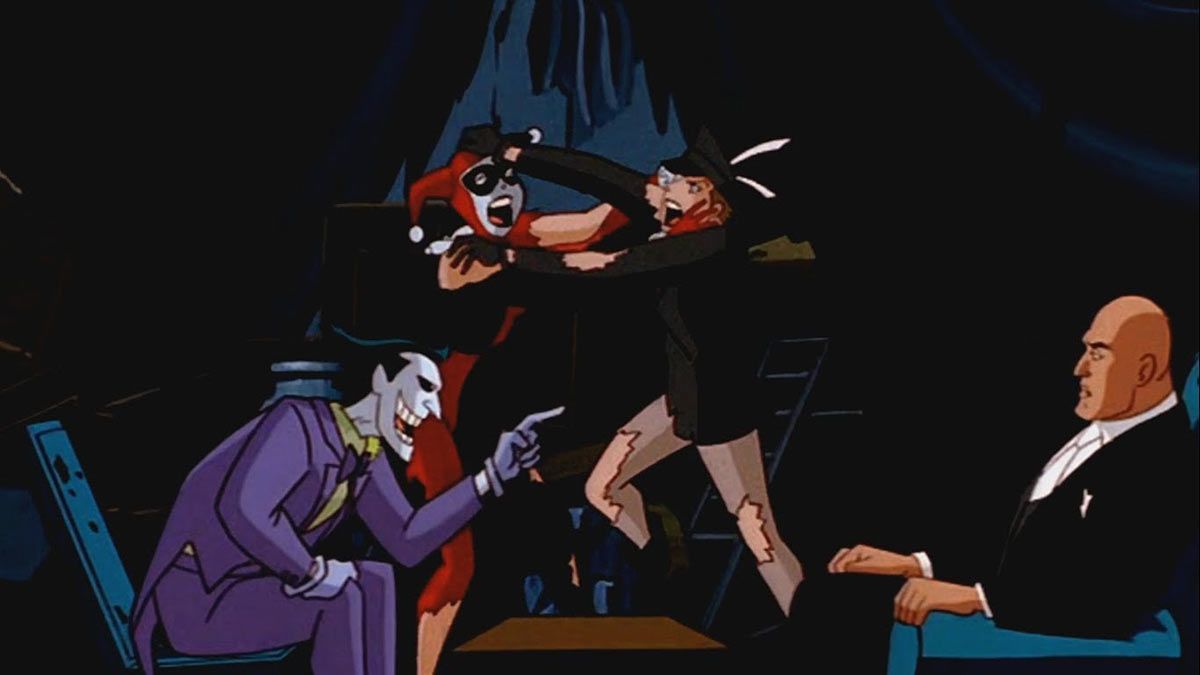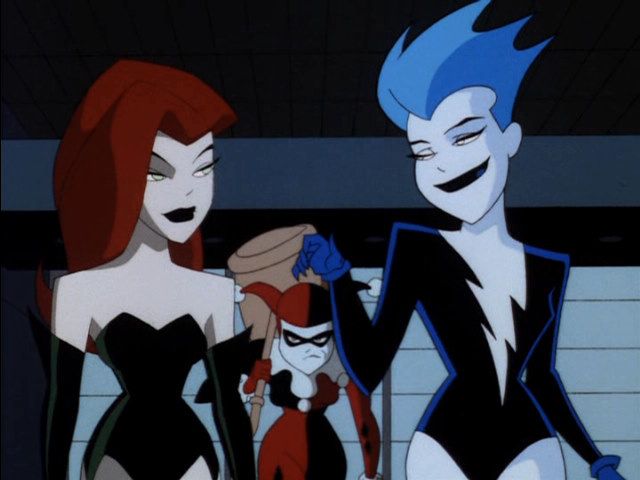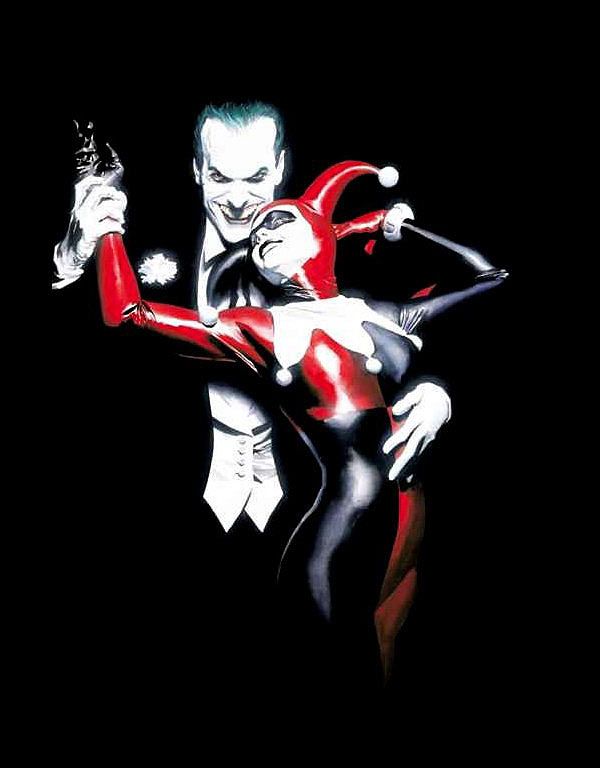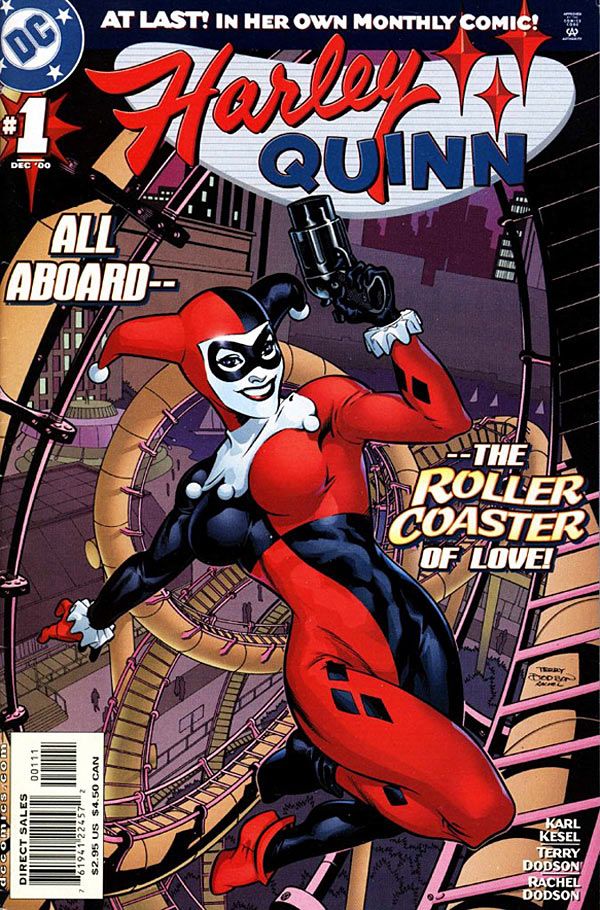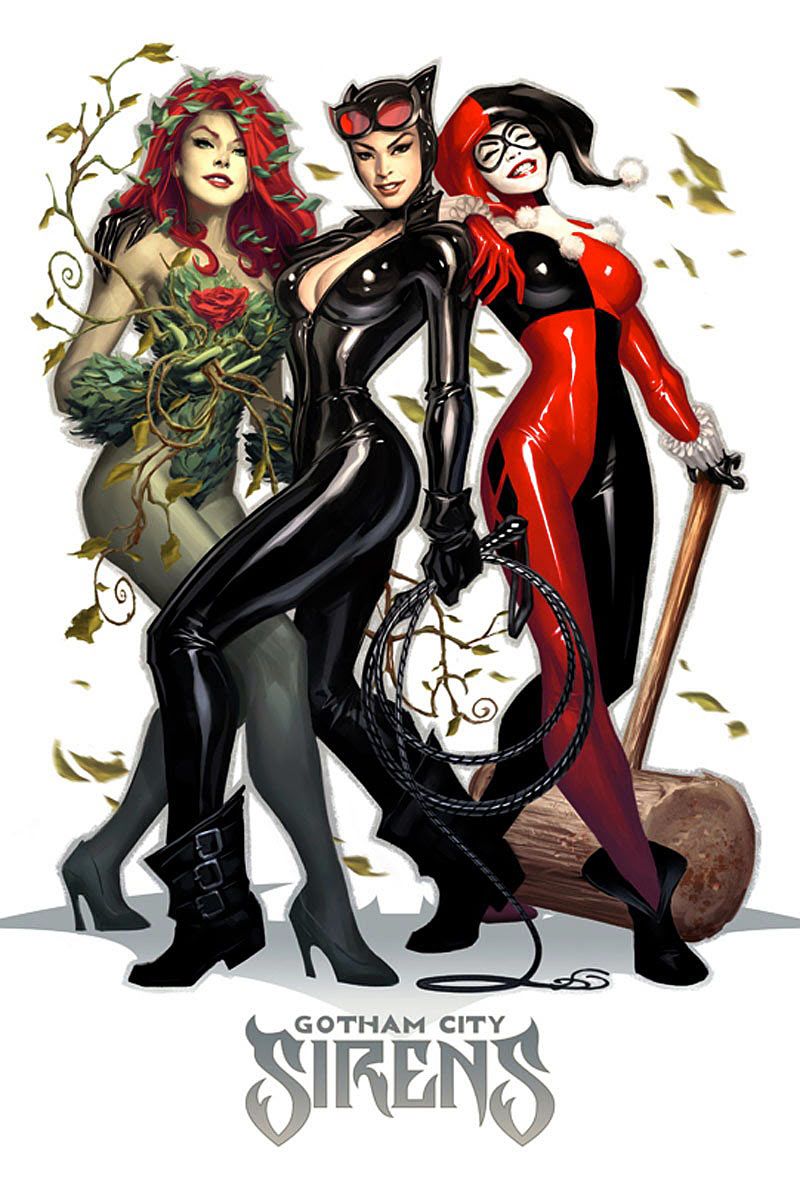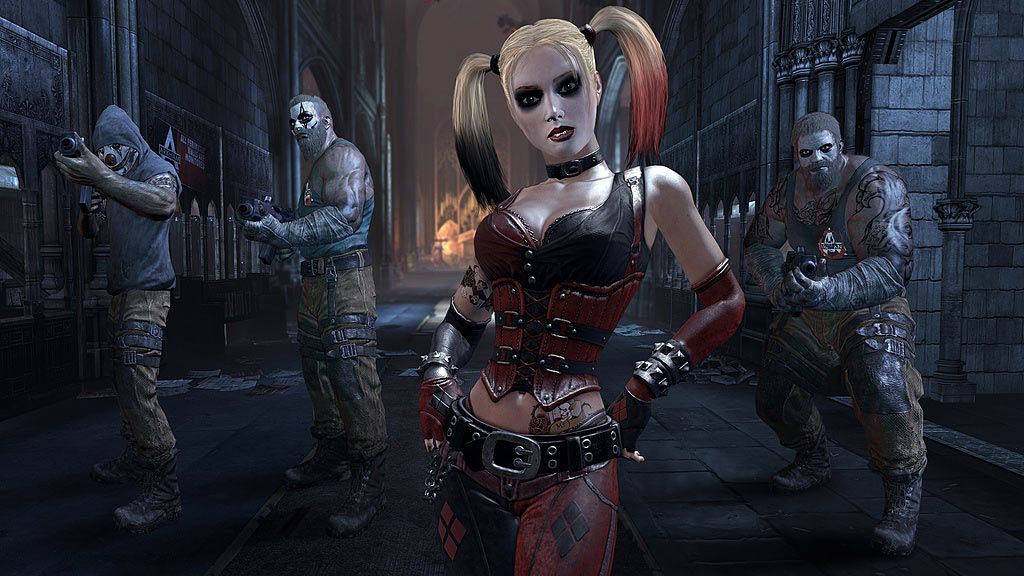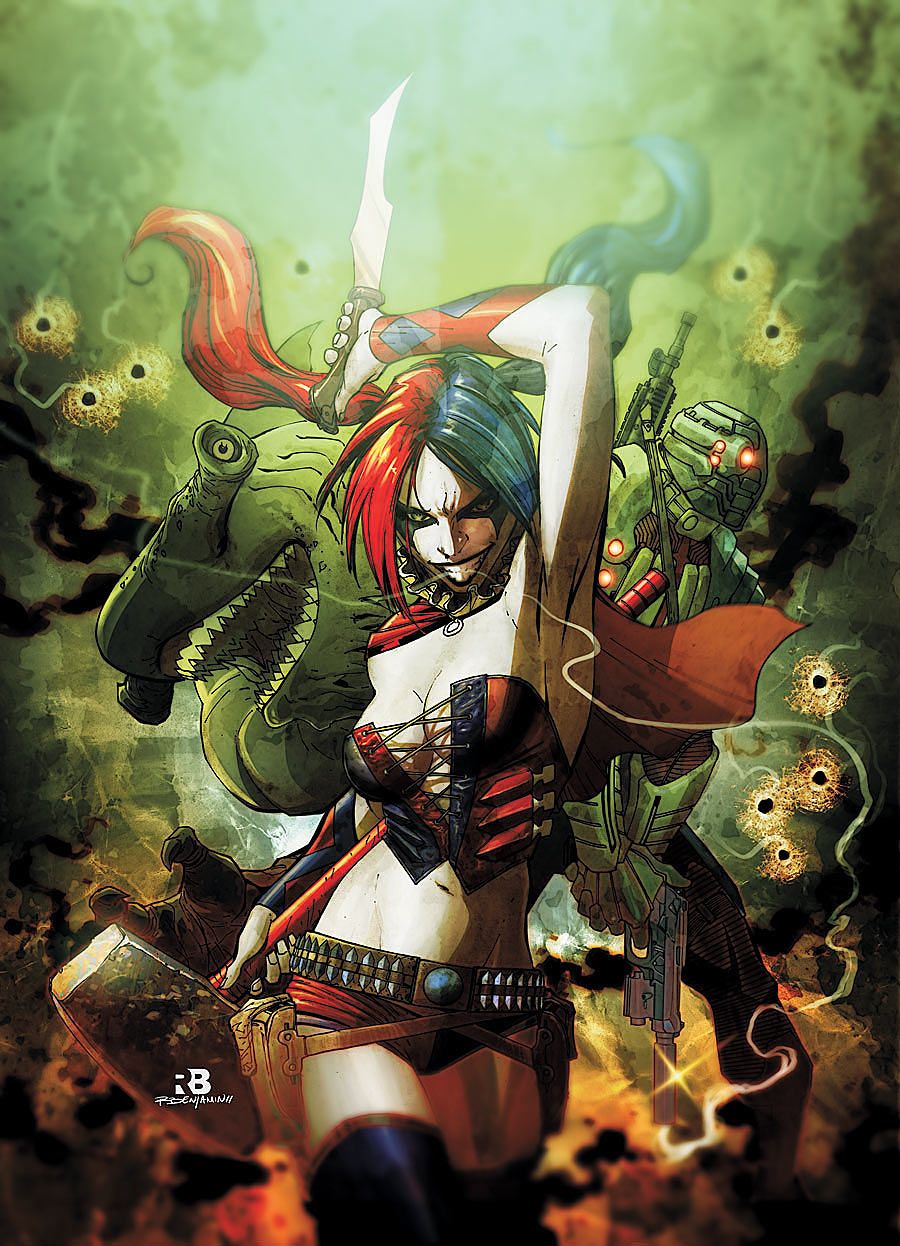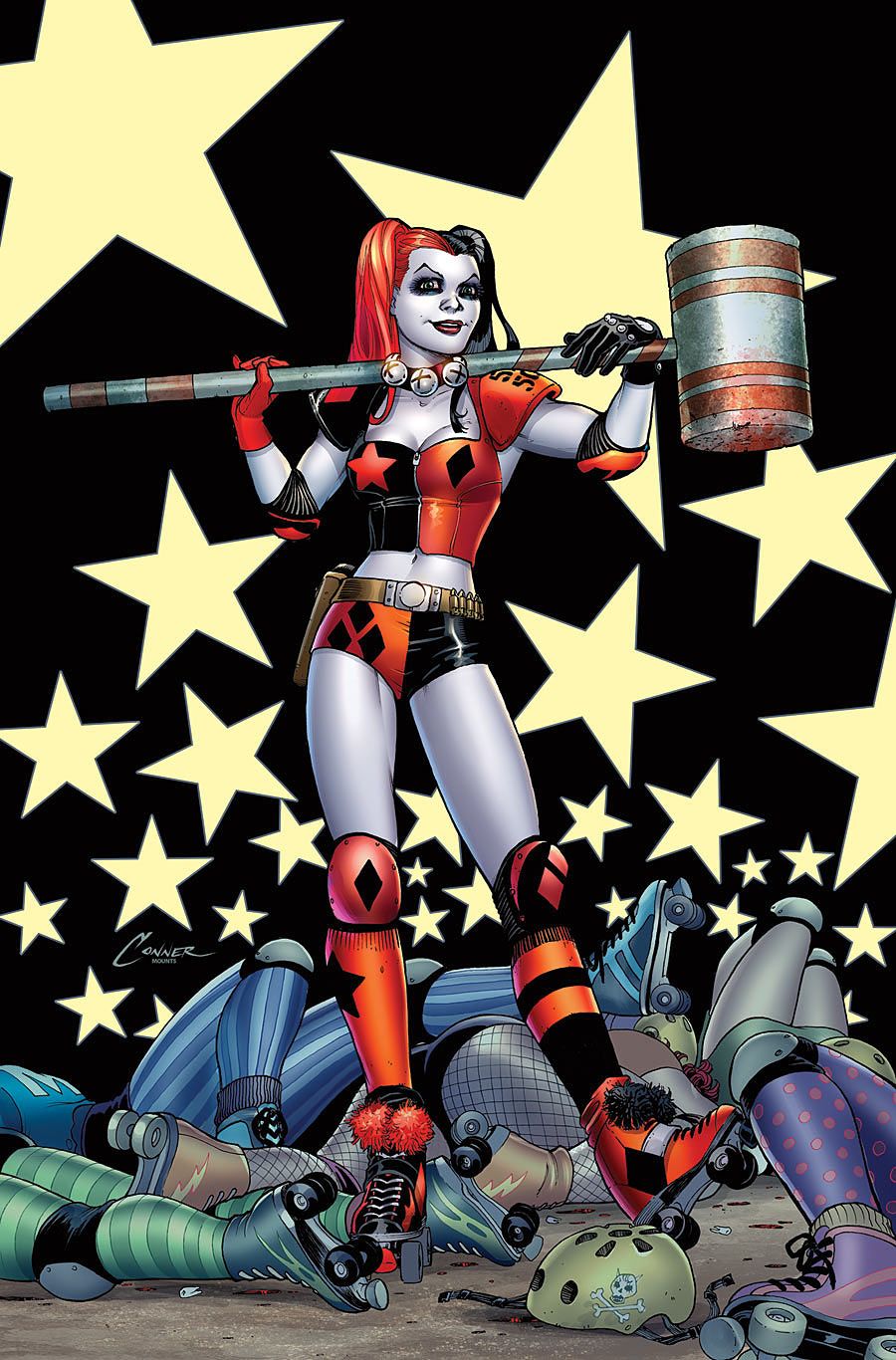When Harley Quinn made her debut in a bit part in "Joker's Favor" a 1992 episode of "Batman: The Animated Series," few could have guessed the motley clad moll would go on to become one of DC Comics' most popular and marketable characters. Between her current top-selling solo title from the creative team of Jimmy Palmiotti, Amanda Conner and Chad Hardin; her popularity in the "Batman: Arkham" video game franchise and an upcoming role in Warner Bros. and DC's "Suicide Squad" film adaptation (played by Margot Robbie), it's safe to say that 23 years after her debut, Harley is now bigger than ever.
RELATED: The Strange History of Harley Quinn
Harley Quinn was created by Paul Dini and Bruce Timm for their vastly influential "Batman: The Animated Series." Originally voiced and partially inspired by actor Arleen Sorkin, who bestowed upon the character her signature Brooklyn accent, Harley's popularity didn't stop at cartoons. She made her comics debut in "The Batman Adventures" #12 (September 1993), which was set in "Batman: TaS" continuity, and joined the DC Universe proper in 1999 during the "No Man's Land" crossover that saw an earthquake decimate Gotham City. Since then, Harley has become a major player at DC, making her mark far beyond the Batman family of titles. To celebrate Harley Quinn's continuing -- and escalating -- success, join CBR for a look back at some of the moments that defined the psychiatrist-turned-clown princess of crime.
Cartoon Debut
"Batman: The Animated Series" - "Joker's Favor" (Originally Aired September 11, 1992)
In her debut, our lady of chaos takes part in the Joker's plan that involves a poor sap named Charlie Collins. On a seemingly innocent drive, Collins was cut off by a reckless driver. Angered, Collins screamed at the other driver -- only realizing his mistake too late when his gaze was returned by that of the Joker. Collins swore to villain he he would do anything if the Joker spared his life, and Joker secured Collins' loyalty by threatening his family. All Charlie had to do was open a door during a dinner held for Commissioner Gordon. When that fateful door opened, a woman in pancake makeup wheeled in a giant cake. This woman donned a gas mask and introduced the Joker, who promptly paralyzed everyone in the room and pinned a bomb to Gordon's lapel. It was a classic Joker plan, but what stood out most was his new accomplice; that white-faced girl with the Brooklyn twang who proved a perfect complement to the Joker's special brand of mayhem. Thanks to Charlie's quick thinking, Batman saved the day but it was clear that the Joker had a new moll, a lady who would make a huge impact on the world of Batman for years to come.
"Harley and Ivy"
(Originally aired January 18, 1993)
For many episodes of "Batman: The Animated Series," Harley remained steadfastly by the Joker's side, doing his bidding and taking his abuse. But in "Harley and Ivy," Quinn busted out on her own. During a typical Joker heist, Harley and her Mr. J were pursued by Batman and Harley accidentally handed Joker a bang flag gun when he had Batman in his sites. Enraged by Harley's screw up, Joker booted her from his gang. Harley planned her own heist to show her puddin' that she had a mind for crime, and during the caper she ran into Poison Ivy and the two escaped together. What followed was Harley and Ivy against the world, escaping Batman, the Joker and the GCPD as the newly formed sisters in crime became DC's version of Thelma and Louise. The two women swore no man would ever bring them down, a promise which held true when their spree was finally brought to a halt ended by Officer Renee Montoya. Ivy and Harley still have a strong bond to this day, and it all began in this Paul Dini-written episode that proved the ladies of Gotham don't have to play second string to any man.
"Harlequinade"
(Originally aired May 23, 1994)
In this fabulous episode of "Batman: The Animated Series," again written by Dini, Harley showed for the first time she was far more than her costume and gimmicks. When the Joker steals a nuclear bomb, only Harley can help Batman and Robin stop the Clown Prince of Crime from doing the unthinkable. Throughout the episode, fans saw glimpses of the woman Harley was before she put on the grease paint. These details were only hinted at, but gave the distinct impression there was plenty of depth and a healthy dose of tragedy to the character. When Harley learns Joker was planning to let her die along with rest of Gotham, she shows him just how deadly a woman scorned can be.
"World's Finest"
(Originally aired October 4, 1997)
When the first meeting of the animated versions of Batman and Superman was announced, fans were anticipating three clashes: The first between the titular heroes; the second was between Lex Luthor and the Joker; and the third was between Luthor's no nonsense bodyguard Mercy Graves and our lady of the hour, Harley Quinn. Mercy and Quinn were both created especially for the DC Animated Universe and both had amassed quite the fan following. When Mercy and Quinn went at it, the results were hilarious. While their bosses sparred verbally, Quinn and Mercy could be seen in the background having a prolonged Bugs Bunny versus Daffy Duck clash of one-upsmanship. Harley may not have been the focus of this animated film, but as usual, she stole the show whenever she was on screen.
"Girls' Night Out"
(Originally aired January 16, 1999)
In this episode of "The New Batman Adventures," Harley teamed with Poison Ivy and the electrified Superman super villain Live Wire to take on the first-time team of Batgirl and Supergirl. This caper began when Harley and Ivy were looking for an edge against Batman when a recently escaped Live Wire arrived at their hideout. Their first plan was to take down all the cash machines in a shopping mall, a plot foiled by Batgirl and Supergirl. While the trio of crooks didn't get away with the cash, they held their own against the two heroes. What followed was a triple crime spree that pushed Supergirl and Batgirl to their limits. This episode hilariously displayed Harley's tenacity as she tried to take down Supergirl with a boxing glove gun only to knock herself out. She didn't have a chance against the Girl of Steel, but that didn't stop her from trying -- winning her the admiration of her super powered comrades.
"Mad Love"
Comic Book (1994) by Paul Dini, Bruce Timm and Glen Murakami
"The New Batman Adventures" episode (Originally aired January 16, 1999)
"Mad Love" started out as a comic book one-shot that detailed the origins of Harley Quinn and was later adapted into an episode of "The New Batman Adventures." In both comic and cartoon, it was revealed that Harley Quinn was once PHD psychiatrist Dr. Harleen Quinzel until she was mentally manipulated by her newest patient, the Joker. The story is a tragic descent into madness as a well-meaning caregiver is forged into a symbol of madness. "Mad Love's" effectiveness as a story is due in part to the fact that it does not flinch from the domestic abuse, something intrinsic to Harley and the Joker's relationship. When Quinn almost killed Batman, Joker became enraged and almost killed his lover. When Joker corners Batman, the Dark Knight hits the Joker with the classic line, "I have to admit she came a lot closer to killing me than you ever did... Puddin'!" Joker's anger over being upstaged makes him drop his guard, allowing Batman the opening he needs to take him down. Both the comic book and the episode highlight just how broken Harley is, as well as the depraved and tragic nature of her love for the Joker.
"Harley Quinn" #1
by Karl Kesel, Terry Dodson and Rachel Dodson (2000)
Harley Quinn made her first appearance in the comic book DC Universe during the "No Man's Land" event. Her introduction was muted by the noise of the multi-part crossover, but by the time Harley graduated to her her own title, she had most definitely arrived. Written by Karl Kesel and drawn by Terry and Rachel Dodson, Harley was thrust into the spotlight and carried her new superstar status with aplomb. In her first solo adventure, Harley busted the Joker out prison and helped him build a Murder Coaster. In typical Joker fashion, when he got sick of Harley's smothering devotion he tried to murder her. Harley was saved by Poison Ivy, but the Joker's betrayal set Harley down a new solo path. The Murder Coaster stands as one of Harley's greatest achievements and showed the DC Universe that even without the Joker, she is one deadly woman.
"Gotham City Sirens"
by Paul Dini, Tony Bedard, Peter Calloway and Guillem March (June 2009 - August 2011)
Gotham's greatest female villains all united in "Gotham City Sirens," a series written by Harley Quinn's co-creator Paul Dini that saw Catwoman join Harley and Ivy to form a group of antiheroes who took Gotham by storm. In the pages of this fun series, the three lethal ladies met up with other DC greats like Talia al Ghul and Zatanna, fighting to prove they were as deadly as any of the better known villains in Gotham. The book allowed Dini to compare the relationship between Joker and Harley to the romantic bond between Catwoman and Batman, pointing out some disturbing commonalities between the two. Ending right before the dawn of DC's New 52 era, the series saw the three friends fight the deadliest threats Gotham had to offer, as one kickass unit of full of confidence and competence. The whole thing functioned almost as the anti-Birds of Prey, and allowed Harley to shine as an integral part of the team.
"Batman: Arkham Asylum" Video Game (2011)
Harley became one of the most popular characters in the hugely influential "Arkham" series of video games produced by Rockstar Games and Eidos Interactive. Harley appeared as the secondary villain of the game, winning over a whole new audience as a result. The game also marked the final time Harley was voiced by Arleen Sorkin, the same actor who originated her in "Batman: TaS." The character's New 52 look was in part inspired by her appearance in this game. Her nurse's outfit and exposed pig tail look has become almost as iconic as her original animated appearance. Between how tough a villain she was to defeat and Sorkin's vocal dynamism, the game gave the character a whole new level of popularity.
New 52 "Suicide Squad" (2011)
by Adam Glass and Federico Dallocchio
As part of the New 52, "Suicide Squad" #1 introduced the world to a new Harley, a more goth-inspired criminal who played a major role on this new team of government sanctioned super villains. Harley fit right in with the world of Task Force X and became a perfect foil for Amanda Waller. In this inaugural issue of the new Squad, Harley was tortured with a car battery hooked to her cheeks. Even though her pain, Harley quipped and never lost her edge. It was revealed during the torture that Harley had killed every lawyer ever assigned to defend her in court. From this insanity, it was clear to fans that this Harley possessed a darker edge and could still find her smile, even subjected to vast amounts of pain and suffering.
New 52 "Harley Quinn" #1 (2014)
by Amanda Conner, Jimmy Palmiotti and Chad Hardin
In the first issue of this mega-hit, Harley was given a new supporting cast -- including a dead, stuffed beaver named Bernie, because after all, it's still Harley. She also found a new purpose in life, moving to Coney Island and making a new home for herself in an old building that houses a Freakshow wax museum and other odd businesses. The chance to own and operate the building gave Harley a purpose in life that had no connection to the Joker or the rest of her past. The only catch -- she has to pay back taxes. With no Joker, no Suicide Squad and a new lease on life, Harley tried to secure a job as therapist and joined a roller derby team in order to save her new home. The series has quickly become one of DC's most beloved titles and continues to surprise and delight every month.

